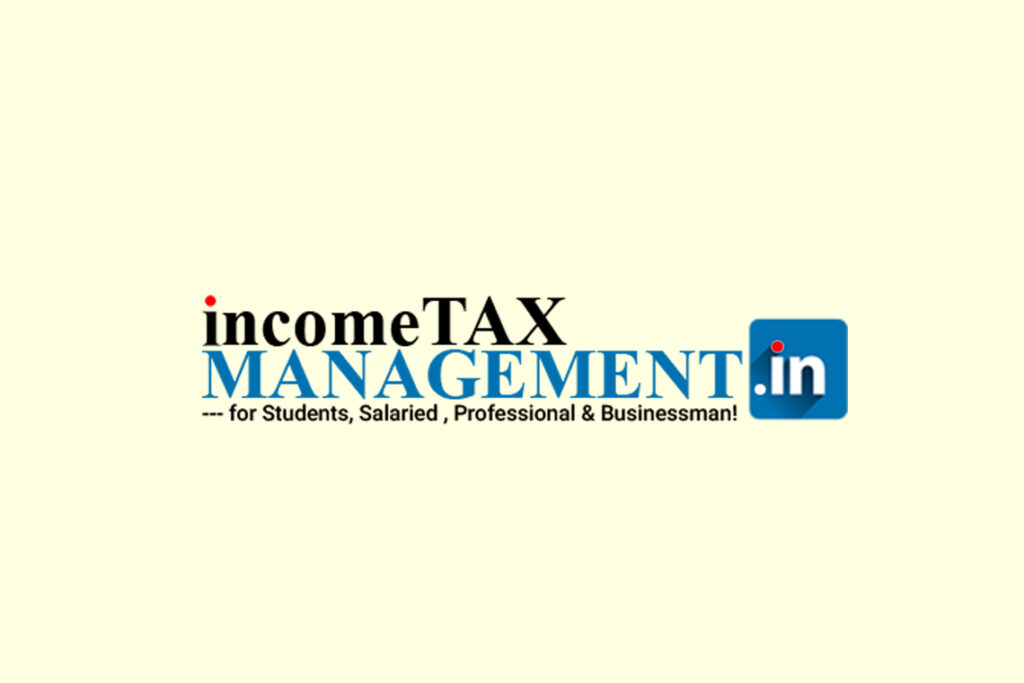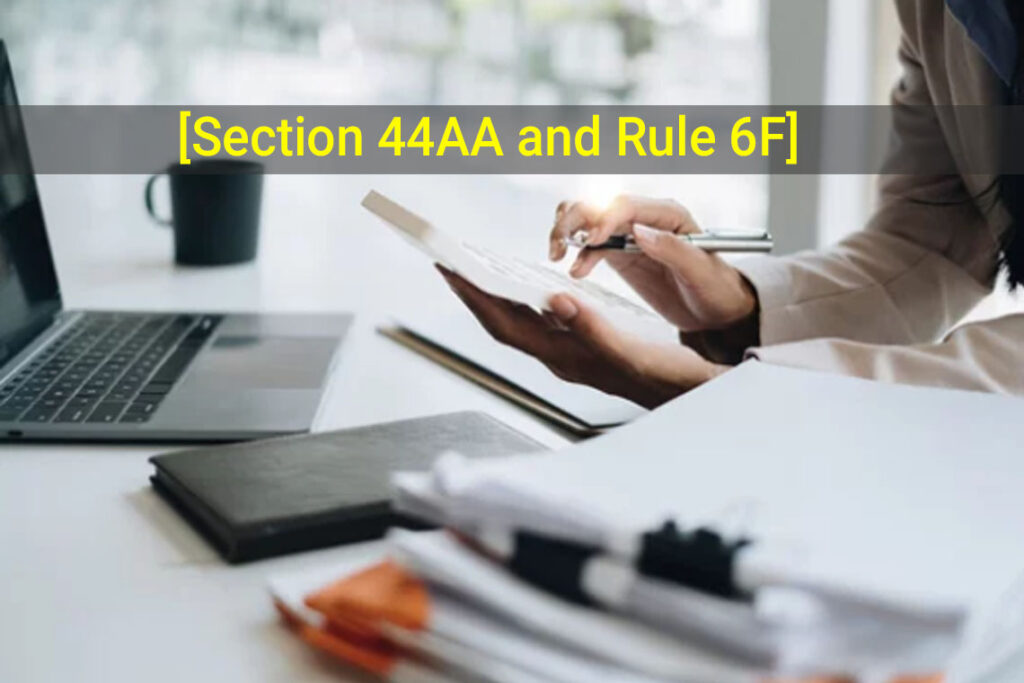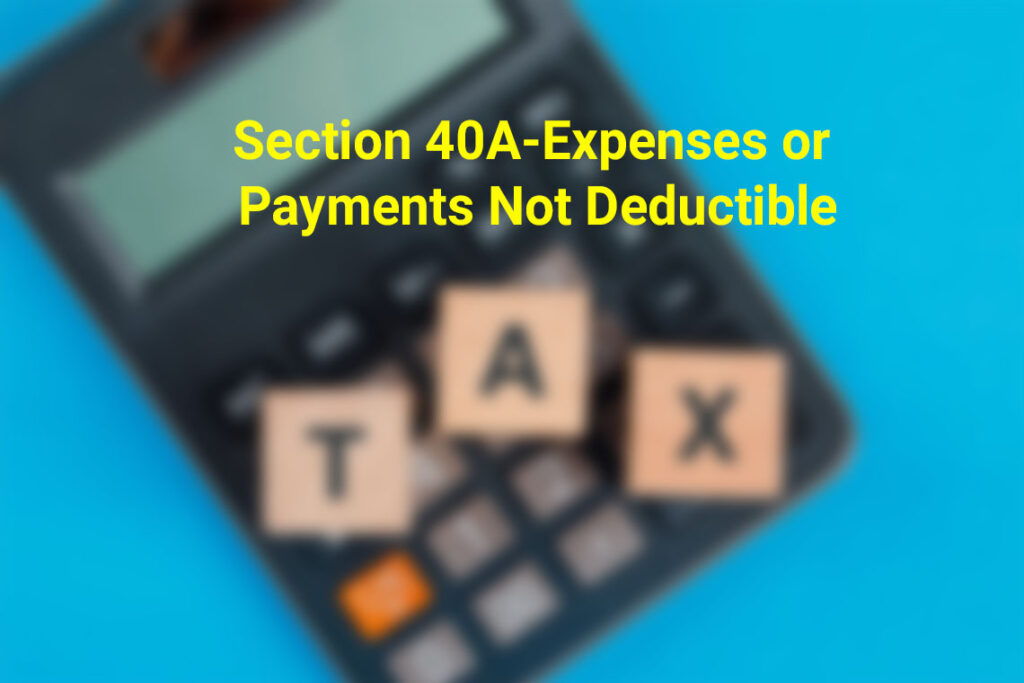What are the Deemed Profits and how they chargeable to Tax as Business Income
1. Recovery against any Allowance or Deduction Allowed earlier [(Section 4 1(1)]
(A) Recovery by the same assessee (Section 41(1)(a)1:
Where an allowance or deduction has been made in the assessment for any year in respect of (i) loss, (ii) expenditure or (iii) trading liability incurred by the assessee and subsequently, during any previous year, he (the same assessee) has obtained, whether in cash or in any other manner, whatsoever—
(i) any amount in respect of such loss or expenditure; or
(ii) some benefit in respect of such trading liability by way of remission or cessation thereof,
then, the amount obtained by the assessee or the value of benefit accruing to him shall be deemed to be profits and gains of business or profession and accordingly chargeable to income-tax as the income of that previous year. It may be mentioned that the business or profession, in respect of which the allowance or deduction has earlier been made, may or may not be in existence in the previous year in which such amount is obtained or the benefit accrued to him.
For example, where the assessee purchased material from another party for Rs.1,00,000 during the previous year 2020-21 and charged it to the Profit and Loss A/c of that year. In the previous year 202 1-22, the assessee received a claim of Rs.20,000 against this material as it was found to be defective. This sum of Rs.20,000 shall be treated as the income of the previous year 2021-22. Similarly, if X purchases goods on credit from Y for Rs.1,20,000 in the previous year 2020-21 but due to certain dispute the payment was not made to Y. However, X debited his Profit and Loss A/c by the amount of Rs.1,20,000 and the expenditure was allowed to him. Subsequently, during the previous year 2021- 22, Y made a settlement with X and agreed to receive Rs.90,000 as full and final settlement of his dues. The remission of Rs.30,000 shall be treated as the income of X for the previous year 2021-22.
(B) Recovery by the successor in business or profession [Section 41(1)(b)]:
If in the above case, instead of the assessee, the successor in business has obtained, whether in cash or in any other manner whatsoever,—
(a) any amount in respect of which loss or expenditure was incurred by the predecessor; or
(b) some benefit in respect of trading liability referred to in clause (A) above by way of remission or cessation thereof,
the amount obtained by successor in business or the value of benefit accruing to the successor in business shall be deemed to be income under the head profits and gains from business or profession of the successor of that previous year.
| 1. Successor in business means:
(i) where there has been an amalgamation of a company with another company, the amalgamated company; (ii) where the assessee is succeeded by any other person in the business and profession, the other person. (iii) where a firm carrying on business or profession is succeeded by another firm, the other firm; (iv) where there has been a demerger, the resulting company. 2. The expression “loss or expenditure or some benefit in respect of any such trading liability by way of remission or cessation thereof” shall include the remission or cessation of any liability by a unilateral act by the person or the successor in business by way of writing off such liability in his accounts. |
2. Balancing charge on assets of an undertaking engaged in generation or generation and distribution of power [Section 41(2)]:
Where any building, machinery, plant or furniture:
(a) which is owned by the assessee;
(b) in respect of which depreciation is claimed under section 32(1)(i) [i.e., assets of an undertaking engaged in generation or generation and distribution of power in respect of which depreciation is to be allowed on the actual cost thereof as per the prescribed rate(s)];
(c) which was or has been used for the purposes of business,
is sold, discarded, demolished or destroyed and the ‘moneys payable’ in respect of such building, machinery, plant or furniture, as the case may be, together with the amount of scrap value, if any, exceeds the ‘written down value’, then, so much of the excess as does not exceed the difference between the ‘actual cost’ and the ‘written down value’ shall be chargeable to income-tax as income of the business of the previous year in which the moneys payable for the building, machinery, plant or furniture became due.
If the business is no longer in existence the provisions of section 41(2) shall apply as if the business is in existence in that previous year.
| 1. “Money payable” in respect of any building, machinery, plant or furniture includes:
(a) any insurance, salvage or compensation moneys payable in respect thereof; (b) where the building, machinery, plant or furniture is sold, the price for which it is sold. 2. ‘Sold’ includes a transfer by way of exchange or a compulsory acquisition under any law for the time being in force but does not include a transfer, in a scheme of amalgamation of any asset by an amalgamating company to the amalgamated company where the amalgamated company is an Indian company. |
3. Sale of Capital Assets used for Scientific Research [Section 41(3)]:
Where any capital asset, used for scientific research, is sold without having been used for other purposes and the sale proceeds together with the total amount of deduction u/s 35 exceed the amount of capital expenditure, the excess or the amount of deduction claimed and allowed earlier whichever is less shall be chargeable to Income-tax as “Income from business or profession” of the previous year in which the sale took place.
For example, the assessee purchases a machinery for ₹90,000 during the previous year 2015-16 for scientific research and is allowed a deduction of ₹90,000 u/s 35. This machinery is sold during the previous year 2019-20 for ₹30,000. In this case ₹30,000 shall be treated as a business income for the previous year 2019-20.
It may be noted that where the asset, after it ceases to be used for scientific research included is used for the purpose of business or profession, then such asset will form part of the block of asset and its ‘cost of acquisition’ to be included in the block of assets shall be nil. Subsequently if this asset is sold, section 41(3) will not be applicable as the asset has been included in the block.
| 1. If the sale proceeds of the asset is in excess of the cost of acquisition then the excess shall be subject to provisions of capital gains.
2. Where the money payable in respect of the above asset becomes due in a previous year in which the business is no longer in existence, it will be assumed as if the business is in existence in that previous year. |
4. Recovery out of Bad Debts Allowed as a Deduction [Section 41(4)]:
Where a deduction has been allowed in respect of a bad debt, or part of a debt u/s 36(1)(vii) then, if the amount subsequently recovered on any such debt or part is greater than the difference between the debt and the amount so allowed, the excess shall be deemed to be the profits and gains of business or profession and shall be chargeable to tax as the income of the previous year in which it is recovered, whether the business or profession in respect of which the deduction has been allowed is in existence in that year or not. For example, the assessee who was allowed a deduction of ₹60,000 on account of bad debts in the previous year 2017-18, recovers the entire amount of ₹60,000 during the previous year 2019-20. The amount so recovered, shall be taxable as income even if that business in respect of which deduction was allowed was not in existence in that year. If he recovers ₹15,000 only, then ₹15,000 shall be taxable.
5. Amount withdrawn from Special Reserve created and maintained by certain Financial Institutions [Section 41(4A)]:
Where a deduction has been allowed in respect of any special reserve created and maintained under section 36(1)(viii), by certain financial institution, etc. if any amount is subsequently withdrawn from the special reserve, it shall be deemed to be the profits and gains of business or profession and accordingly be chargeable to income-tax as the income of the previous year in which such amount is withdrawn, whether the business is in existence in that previous year or not.
6. Deemed Income in the hands of recipient in case of Discontinued Business or Profession [Section 176(3A) and (4)]:
In the cases discussed above, there was deemed income on account of the recovery/remission, etc. a loss, expenditure, trading liability, bad debt, etc. which were earlier allowed as deduction in computing the business income. The deemed income was taxable even if such business was no longer in existence. In addition to that there may be income received after the discontinuance of the business or profession which will also be treated as deemed income of the previous year in which it is received.
(a) Recovery of any sum in case of discontinued business [Section 176(3A)]:
Where any business is discontinued in any year, any sum received after the discontinuance shall be deemed to be the income of the recipient and charged to tax accordingly in the year of receipt, if such sum would have been included in the total income of the person who carried on the business had such sum been received before such discontinuance.
(b) Recovery of any sum in case of discontinued profession [Section 176(4)]:
Where any profession is discontinued in any year on account of the cessation of the profession by, or the retirement or death of, the person carrying on the profession, any sum received after the discontinuance shall be deemed to be the income of the recipient and charged to tax accordingly in the year of receipt, if such sum would have been included in the total income of the aforesaid person had it been received before such discontinuance.



![Compulsory Tax Audit of Accounts [Section 44AB]](https://incometaxmanagement.in/wp-content/uploads/2023/09/Compulsory-Tax-Audit-of-Accounts-Section-44AB-1024x683.jpg)




![General Deductions [Section 37(1)]](https://incometaxmanagement.in/wp-content/uploads/2023/09/General-Deductions-Section-371-1024x683.jpg)

![Expenses allowed as a Deduction [Sections 30 to 35]](https://incometaxmanagement.in/wp-content/uploads/2023/09/Expenses-allowed-as-a-Deduction-Sections-30-to-35-1024x683.jpg)